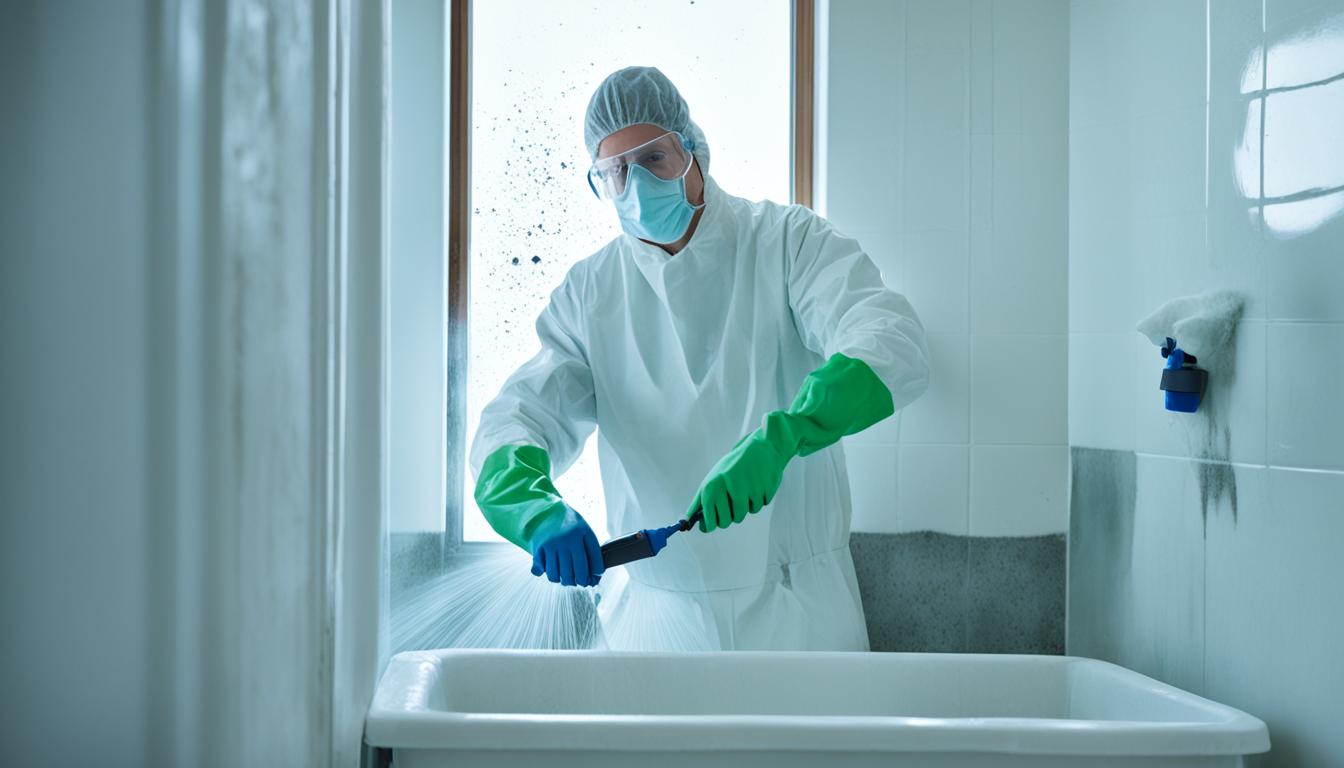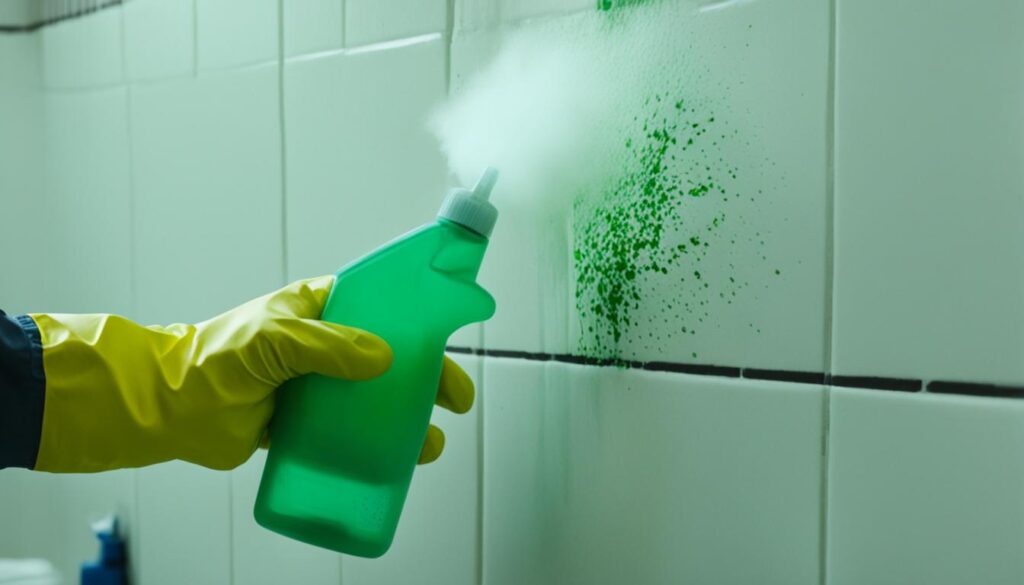
Effective Mold Removal with Bleach – Tips & Safety
Mold growth in our homes can be a concerning issue, not only for the structural integrity of our living spaces but also for our health. It is essential to address mold growth promptly and effectively to maintain a clean and healthy home environment. In this article, we will explore the safe and effective techniques for removing mold using bleach, providing you with expert tips and safety advice. By following these methods, you can ensure a cleaner and healthier living space for you and your loved ones.
Before we delve into the mold removal process, it is crucial to understand the risks associated with mold. Mold can cause various health issues, including allergic reactions, respiratory problems, and even exacerbate existing conditions such as asthma. Additionally, certain types of mold, such as black mold, can produce toxins that can be harmful when exposed to in large amounts. Therefore, swift and effective action is necessary when dealing with mold growth to minimize these risks.
Key Takeaways:
- Addressing mold growth promptly is crucial for maintaining a clean and healthy home environment.
- Mold can cause a range of health issues, including allergic reactions and respiratory problems.
- Certain types of mold can produce toxins that are harmful when exposed to in large amounts.
- The use of bleach for mold removal is an effective and accessible method.
- Proper safety precautions should be followed when using bleach for mold removal.
Understanding Mold and Its Risks
Before delving into the process of mold removal with bleach, it is crucial to have a comprehensive understanding of mold and the potential risks it poses. Mold is a type of fungi that can thrive in damp and humid environments, making it a common problem in homes and buildings.
Common Types of Mold:
There are various types of mold commonly found indoors, including:
- Stachybotrys chartarum (black mold)
- Aspergillus
- Penicillium
- Cladosporium
- Alternaria
Potential Health Effects:
Mold is known to release tiny spores into the air, which can be inhaled by individuals present in the affected environment. Exposure to mold spores can lead to various health issues, including:
- Allergic reactions
- Asthma attacks
- Respiratory issues
- Irritation of the eyes, nose, and throat
The Importance of Swift Action:
When mold growth is detected, it is essential to take immediate action to prevent it from spreading further. Mold can quickly colonize and cause structural damage to the affected area, leading to costly repairs. Moreover, prolonged exposure to mold can exacerbate health issues and pose a threat to the well-being of individuals residing in the space.
“Mold can cause significant damage to your home and affect your health if left unchecked. Taking swift action to remove mold is crucial to prevent further growth and minimize potential risks.”
To gain a clearer understanding, refer to the table below, which provides a comparison of common types of mold, potential health effects, and the importance of immediate action:
| Mold Type | Potential Health Effects | Importance of Immediate Action |
|---|---|---|
| Stachybotrys chartarum (black mold) | Allergic reactions, respiratory issues | Prevents further damage and health risks |
| Aspergillus | Allergic reactions, lung infections | Prevents further damage and health risks |
| Penicillium | Allergic reactions, respiratory issues | Prevents further damage and health risks |
| Cladosporium | Allergic reactions, asthma attacks | Prevents further damage and health risks |
| Alternaria | Allergic reactions, asthma attacks | Prevents further damage and health risks |

The Benefits of Using Bleach for Mold Removal
Using bleach for mold removal is a popular choice due to its effectiveness and accessibility. Mold is a common problem in households and can pose health risks if not addressed promptly. Bleach offers a simple yet powerful solution for eliminating mold and restoring a clean living environment. In this section, we will explore the benefits of using bleach for mold removal and provide step-by-step instructions on how to safely and effectively remove mold using bleach.
Powerful Cleaning Properties
Bleach is highly effective in killing mold spores and preventing their growth. Its strong oxidizing properties break down the mold’s structure, making it easier to remove from surfaces. By using bleach for mold removal, you can ensure thorough cleaning and prevent the spread of mold to other areas of your home.
Affordability
Compared to other commercial mold removal products and professional services, bleach is a cost-effective solution. It is readily available in most households and can be purchased at a reasonable price. Using bleach for mold removal allows you to tackle the problem without breaking the bank.
Ease of Use
Bleach is easy to use and does not require extensive preparation or equipment. With a few simple steps, you can effectively remove mold from affected areas. However, it is important to follow safety precautions and guidelines to protect yourself and minimize any potential risks.
“Bleach is a versatile cleaning agent that can be used for various household tasks, including mold removal. Its accessibility and affordability make it a popular choice among homeowners.”
When using bleach for mold removal, it is crucial to ensure proper ventilation in the area being treated. Open windows or use fans to circulate fresh air and prevent the inhalation of bleach fumes. Additionally, always wear protective gloves and goggles to safeguard your skin and eyes.
Here is a step-by-step guide on how to safely remove mold using bleach:
- Prepare a solution of 1 cup of bleach and 1 gallon of water in a clean bucket.
- Put on protective gloves and goggles.
- Dip a sponge or cloth into the bleach solution and wring out the excess liquid.
- Thoroughly scrub the mold-infested area with the bleach-soaked sponge or cloth.
- Leave the solution on the affected surface for at least 15 minutes to ensure the mold is killed.
- Rinse the area with clean water to remove any residual bleach.
- Wipe the surface dry with a clean cloth or allow it to air dry.
- Dispose of the gloves, goggles, and any used materials properly.
By following these steps, you can effectively remove mold using bleach and restore the cleanliness of your home. However, it is important to note that bleach may not be suitable for porous surfaces or extensive mold growth. In such cases, it is advisable to seek professional mold remediation services for comprehensive and long-lasting results.
Conclusion
In conclusion, mold removal with bleach is an effective technique for eliminating mold from your home. By following proper safety precautions and employing the recommended mold removal techniques, you can successfully remove mold and create a healthier living environment for you and your family.
However, it is important to note that bleach may not be suitable for all types of mold or all surfaces. If you are dealing with an extensive or recurring mold problem, it is recommended to seek professional assistance for a thorough mold assessment and remediation.
For professional mold assessment, prevention, and remediation services in Miami, contact Fix Mold Miami at 305-465-6653. Our team of experts can provide you with the necessary expertise and solutions to effectively address your mold concerns.




